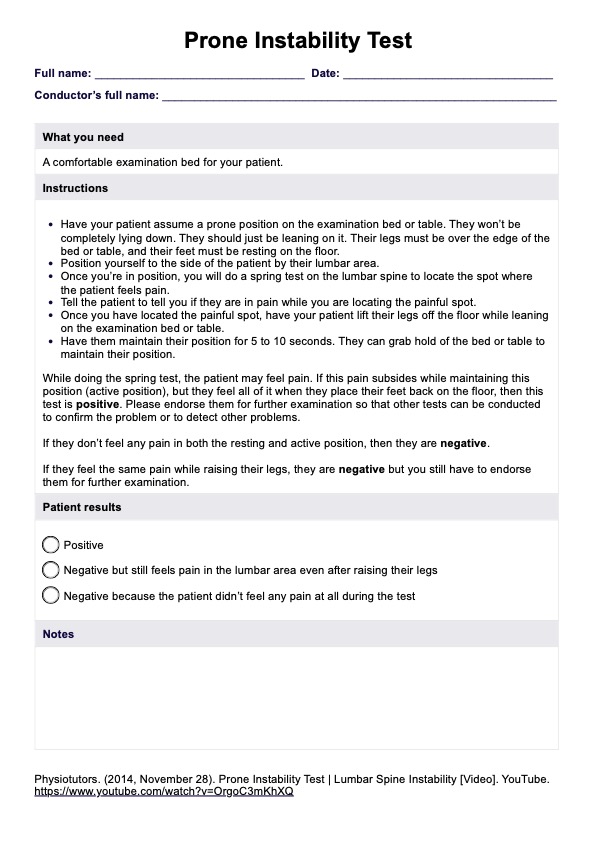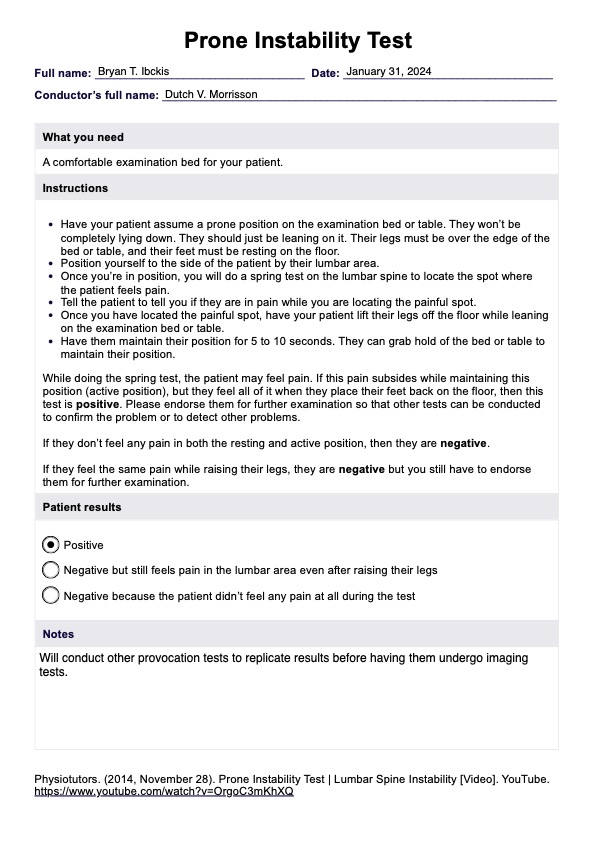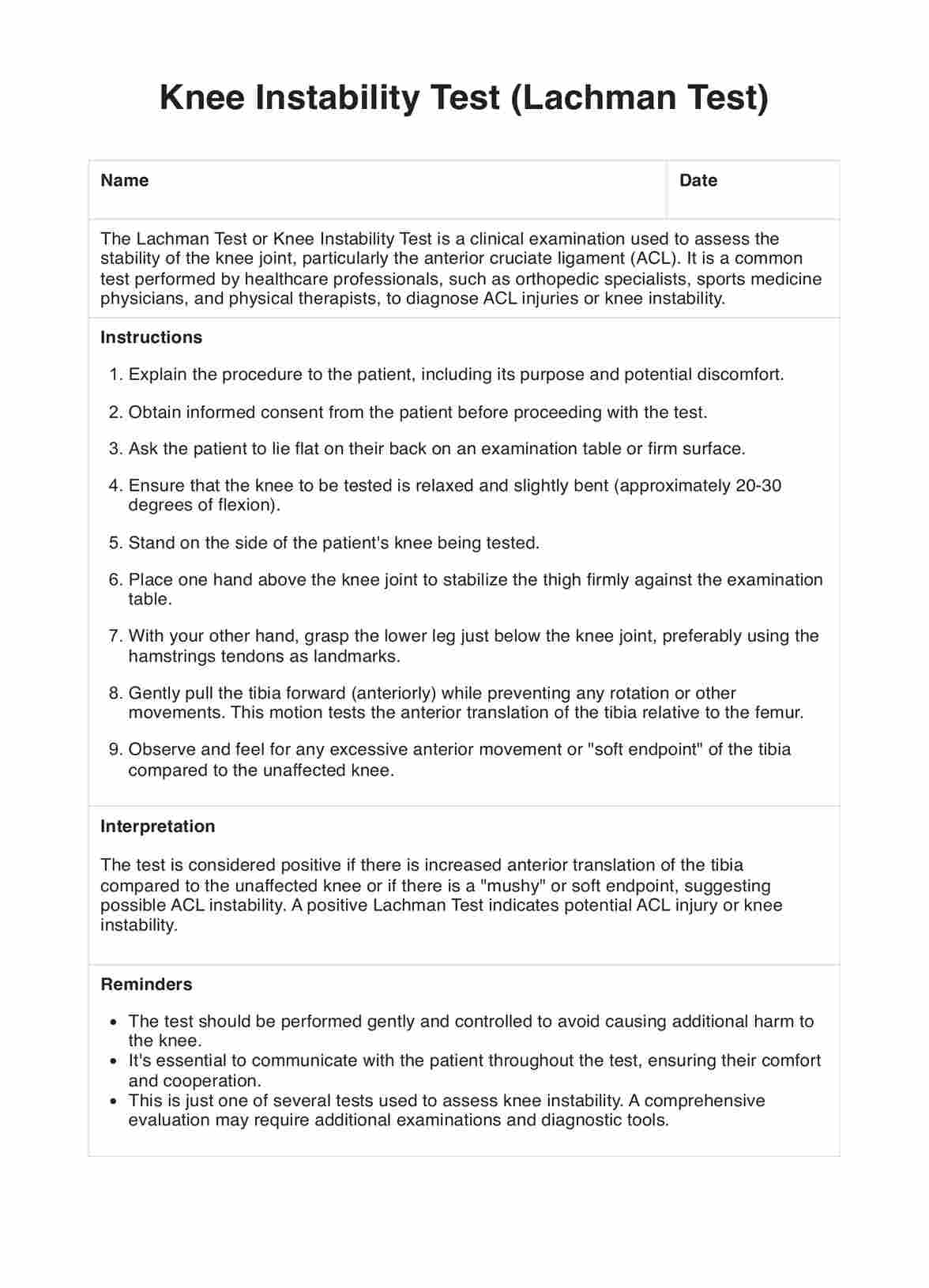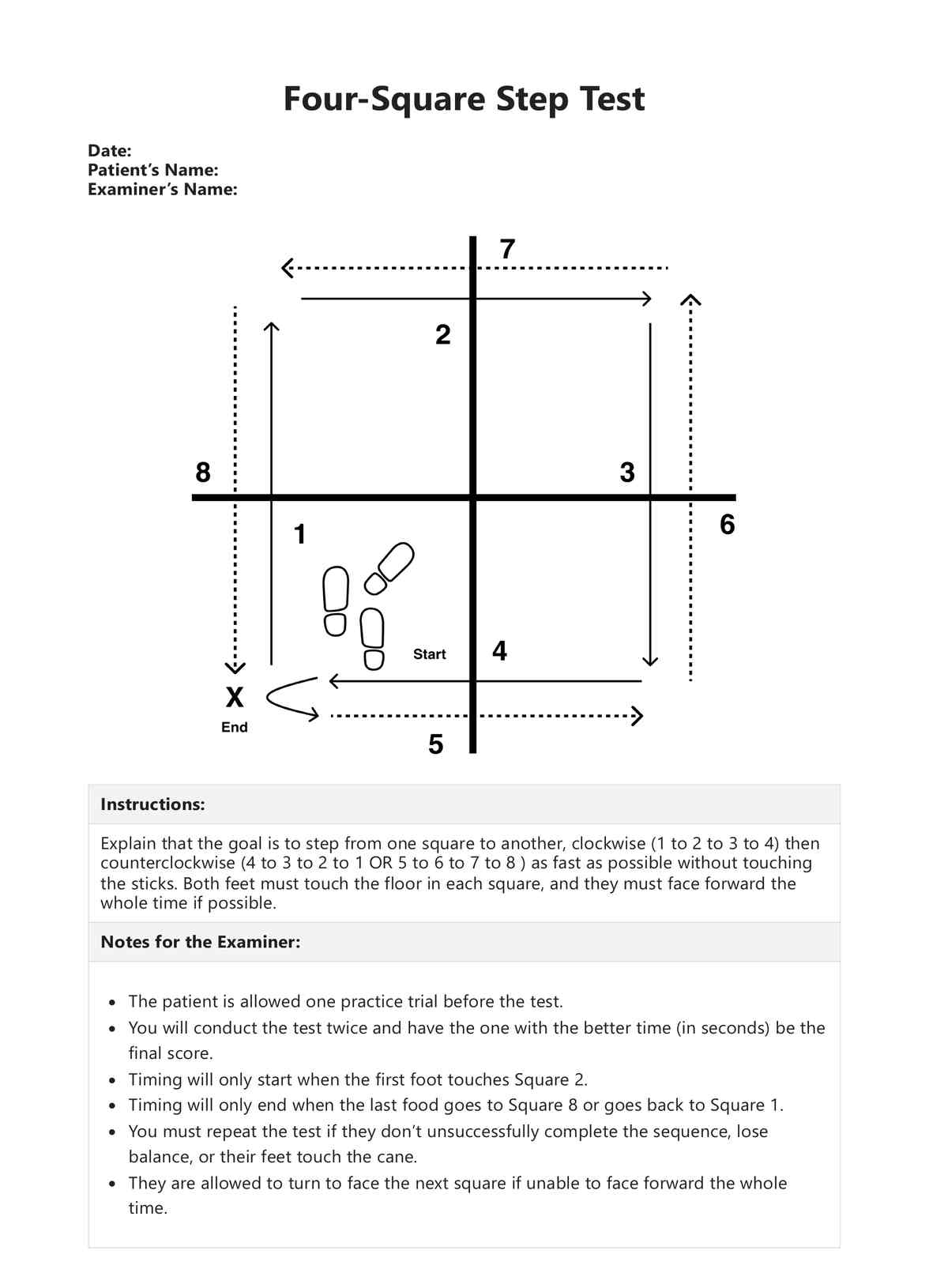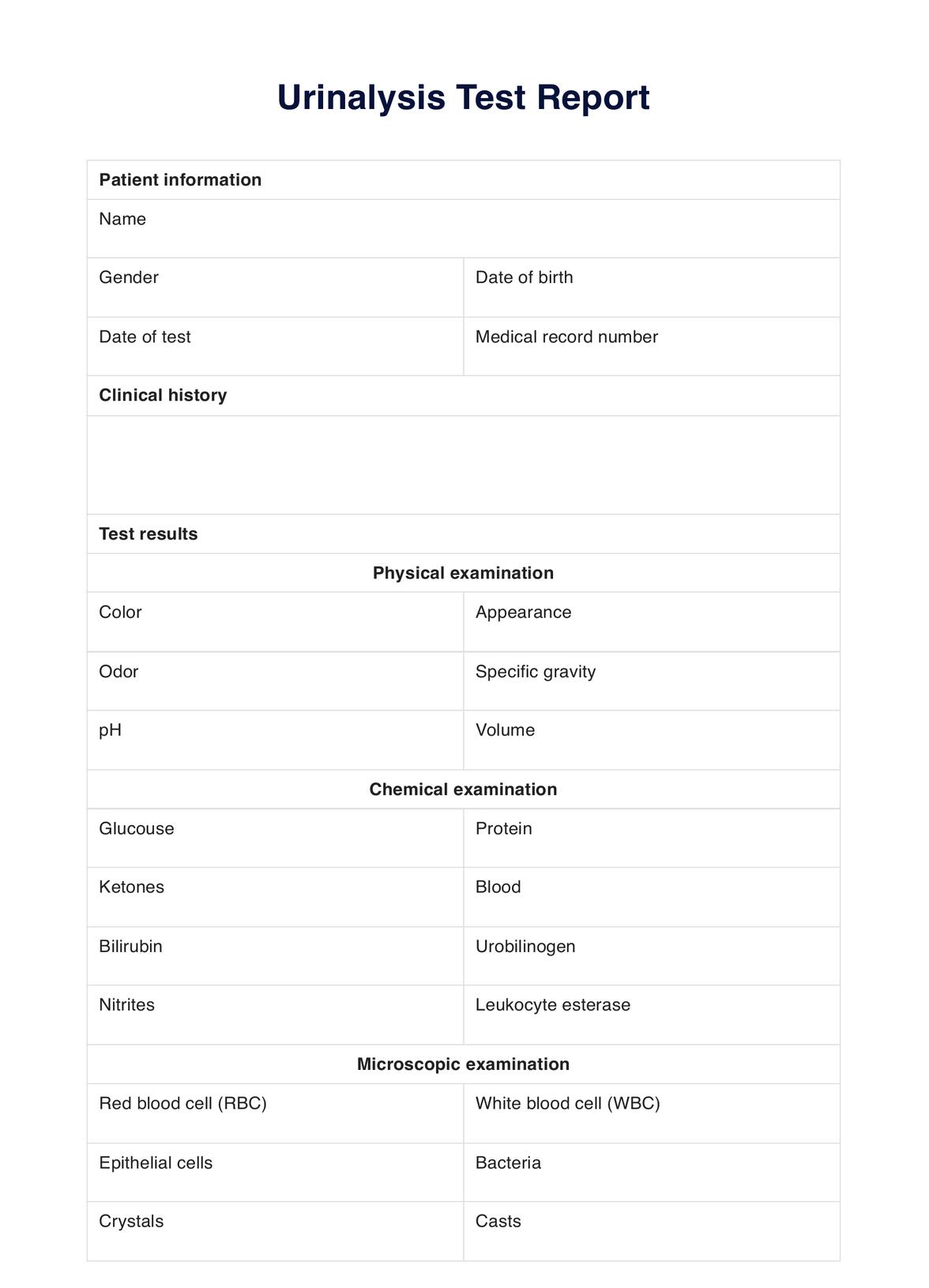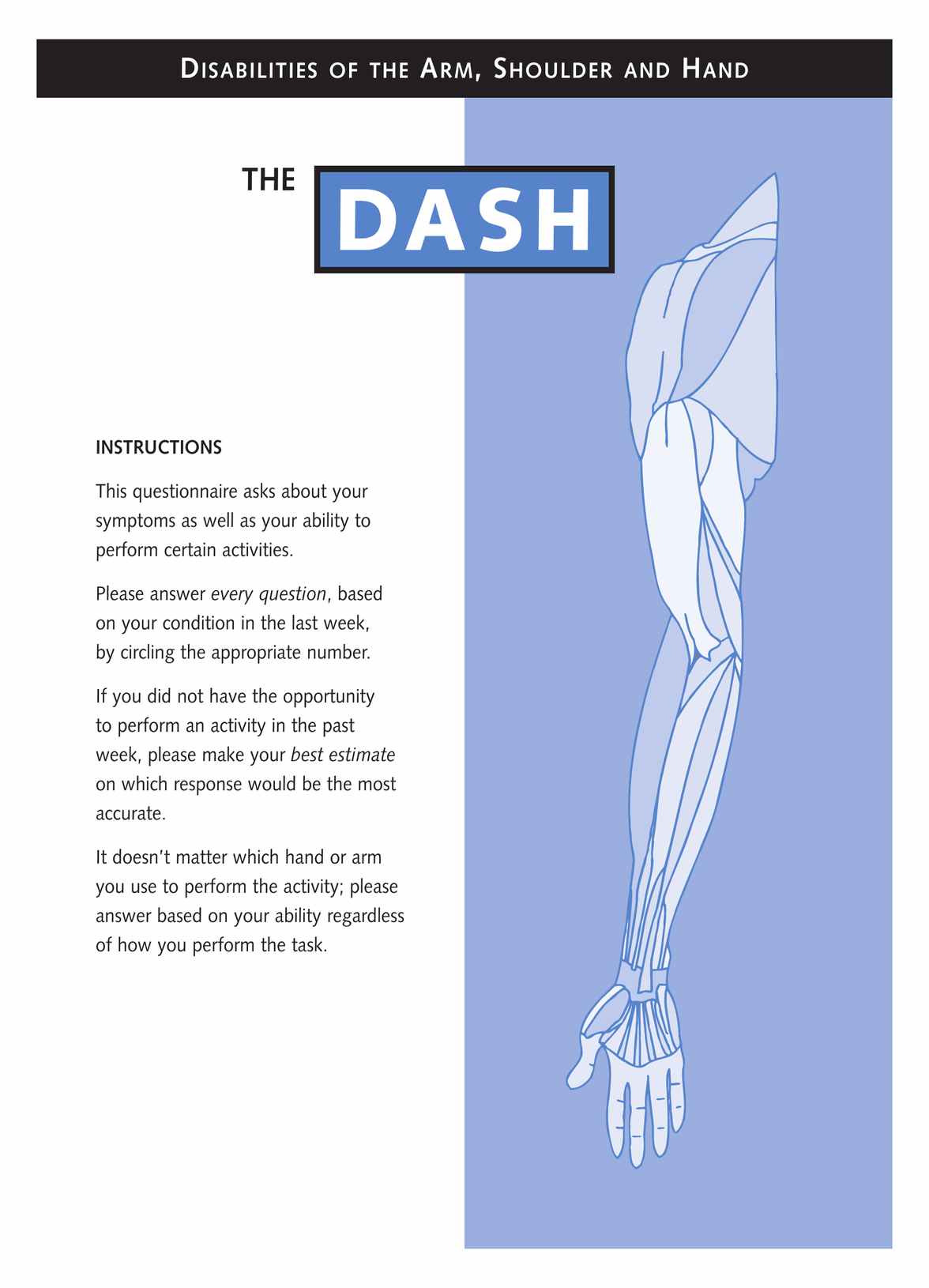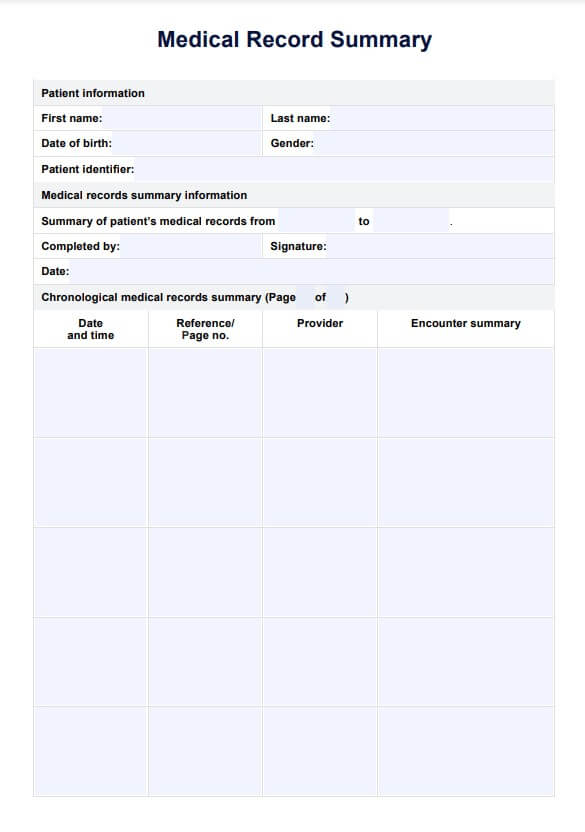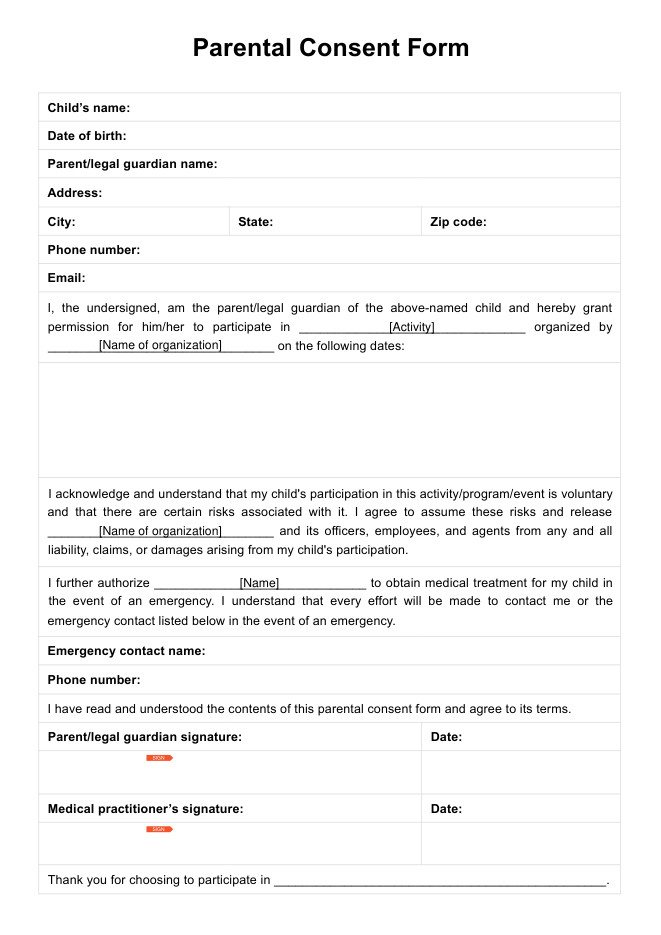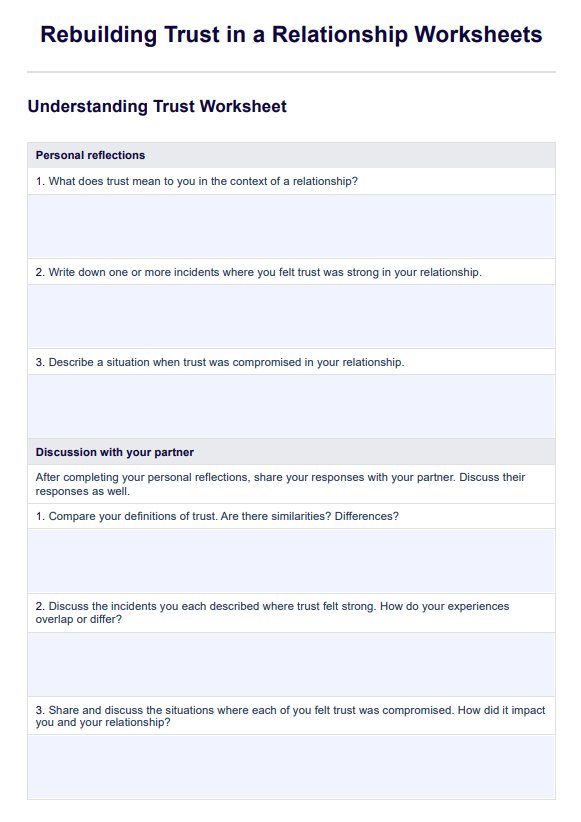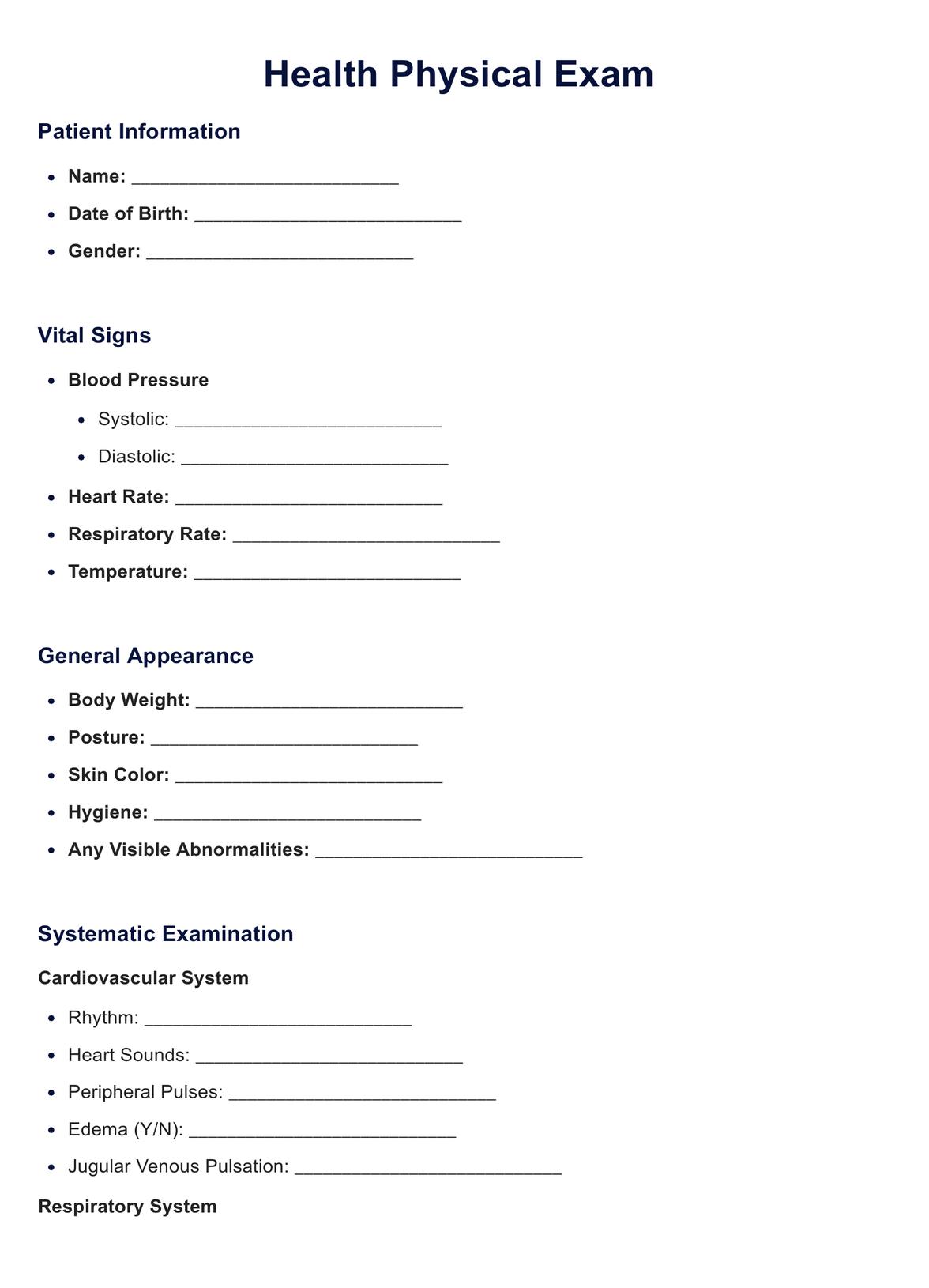Prone Instability Test
Conduct the Prone Instability Test to assess patients and determine if their back pain is caused by lumbar instability.


What is the Prone Instability Test?
The Prone Instability Test is a physical examination procedure that aims to detect lumbar instability or abnormal movement patterns. It's a staple test conducted by physical therapists, orthopedists, and similar professionals, and it's a must for any clinical practice specializing in orthopedics.
This clinical test requires the patient to assume a certain position and maintain it for a few seconds. Depending on whether they can maintain this position or not, and if they feel pain and test positive, their lumbar spine may be compromised.
Prone Instability Test Template
Prone Instability Test Example
How do you conduct the Prone Instability Test?
Before you do anything, the one thing that you have to prepare is a comfortable examination table or bed. This test requires the patient to assume a prone position. Once you have this ready, do the following (but demonstrate all of this first):
- Step 1: Have your patient assume a prone position on the examination bed or table. They won't be completely lying down. They should just lean on it to place only their upper half on the bed or table. Their legs must be over the edge of the bed or table, and their feet must be resting on the floor.
- Step 2: Next, you, the conductor, will position yourself to the patient's side by their lumbar area.
- Step 3: Once you're in position, you will do a spring test on the lumbar spine. This means you will apply downward pressure on the lumbar area until you can locate the spot where the patient feels pain.
- Step 4: Tell the patient to tell you if they are in pain while you are locating the painful spot.
- Step 5: Once you have located the painful spot, have your patient lift their legs off the floor while leaning on the examination bed or table.
- Step 6: Have them maintain their position for 5 to 10 seconds. They are allowed to grab hold of the bed or table to maintain their position.
And those are the steps on how to conduct the Prone Instability Test properly. All you need to do is to conduct the test and then tick any of the three results options on the template. The template also has a Notes section where you can discuss your findings and plans.
How to interpret the findings of the test
To determine the diagnostic accuracy of the results of the Prone Instability Test, you need to take note of the painful spot you located by performing the spring test on the lumbar spine area.
Positive test result
Once the patient raises their legs and maintains their position, ask them if they feel the same pain while keeping their legs raised. If their pain subsides while maintaining this position (active position), but they feel all of it when they place their feet back on the floor, then this test is positive.
Negative test result
They are negative if they don't feel pain in both the resting and active positions. They are still negative if they feel pain in both positions because the Prone Instability Test checks if the pain subsides when the patient assumes the active position. If that's the case, they may have other problems concerning spinal stiffness in their lower back.
If they provoke pain and are positive, the next step is to endorse them for further examination so that other tests can be conducted. Even with a positive designation, it doesn't mean that the problem is 100% lumbar spine instability. It might be a different problem, so other tests will help you confirm it. If they are negative but feel pain, endorsing them for further examination is still the best option.
When is it best to conduct the test?
If a patient shows up for an appointment and tells you about pains in their lower back or recurrent chronic lower back pain, that's the best time to tell them you will perform the Prone Instability Test.
The Prone Instability Test is included as part of a comprehensive examination. It should not be used as the sole assessment to determine the actual problem of a patient's lower back.
That's not to say that the test is unreliable. It is because it can determine if lumbar shear instability is the problem based on a certain factor, but that doesn't necessarily mean that it's just lumbar spine instability. There might be more to the patient's lower back. Other tests, especially imaging tests like magnetic resonance imaging, will help determine if lumbar spine instability is the actual problem and if the patient has other lower back problems like lumbar lordosis or lumbar spondylolisthesis contributing to their (chronic) low back pain.
What are the benefits of the Prone Instability Test?
It's inexpensive to conduct
The Prone Instability Test is a physical examination technique that requires nothing except a comfortable examination bed or table and your own two hands. The instructions are also simple, so conducting shouldn't be difficult. Whatever difficulty will be on the part of the patient, specifically during the part where they have to lift their legs. The possible back problem that they might have could affect their capability to lift their legs while their upper body is in a prone resting position on the bed or table.
It can educate patients about lumbar spine instability
While this was originally designed to assess lumbar spine instability, this technique can also serve as a way to educate patients about lumbar spine instability and why they should maintain good posture as well as proper body mechanics to keep the lumbar spine from developing instability.
By educating the patient, they might feel compelled to make the necessary lifestyle changes to prevent them from developing lumbar spine instability. This can be done during rehab, too!
It can help create lumbar instability management plans
Speaking of educating the patient, the Prone Instability Test can help identify patients who are at risk of developing lumbar spine instability. Suppose this and other tests confirm that patients are developing lumbar spine instability early. In that case, healthcare professionals have the opportunity to develop a care plan that includes manual therapy or a stabilization exercise program that the patient can follow to help curb the problem, prevent it from getting worse, and restore the lumbar spine to a better condition.
It can be used to monitor patients
Not only can this test help guide treatment decisions, but it can also be used to monitor the patient down the line. If you develop and implement a care/treatment plan, then naturally, you'd want to know if it actually works. You can find out by having your patient attend a routine check-up and repeat this test. If there is less pain than before or if it's completely gone, your treatment plan must be effective because the patient is getting better. If the pain is the same or is somehow worse, then that's a sign that you should adjust your treatment plan or overhaul it.
Additionally, the Care Plan template helps organize and track patient care activities to ensure comprehensive management and support.
Commonly asked questions
The Prone Instability Test is a physical examination technique. The instructions are simple, and it can be accomplished in 1 to 5 minutes.
That depends. The technique itself isn't painful. However, patients might feel pain during the part where the professional does a spring test or when the patient has to lift their legs and feet. The pain will come from an already-existing condition, though.
Yes and no. Yes, because the test specifically looks for a certain factor in order to test positive, which is the subsiding of lumbar pain when patients lift their legs. No, because the pain might not necessarily be the fault of lumbar spine instability, other physical examination tests will have to be conducted to fully confirm what the problem is (like the passive lumbar extension test) or to reproduce results.


